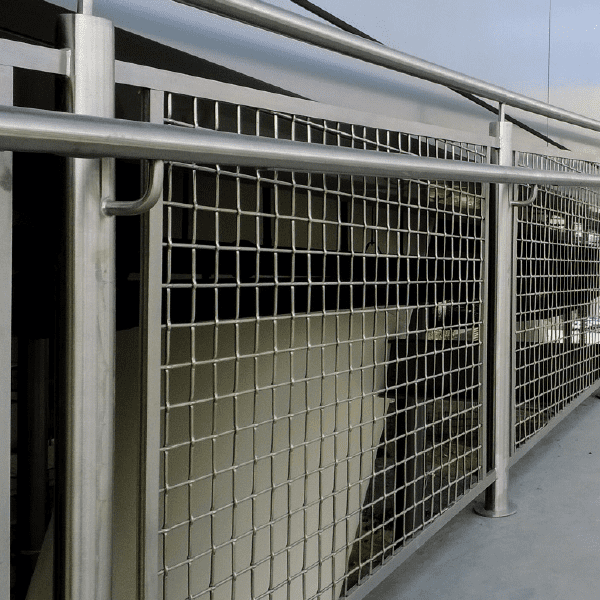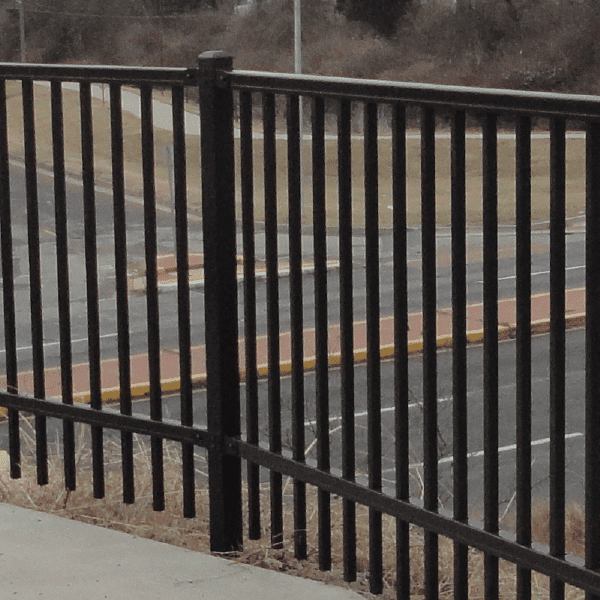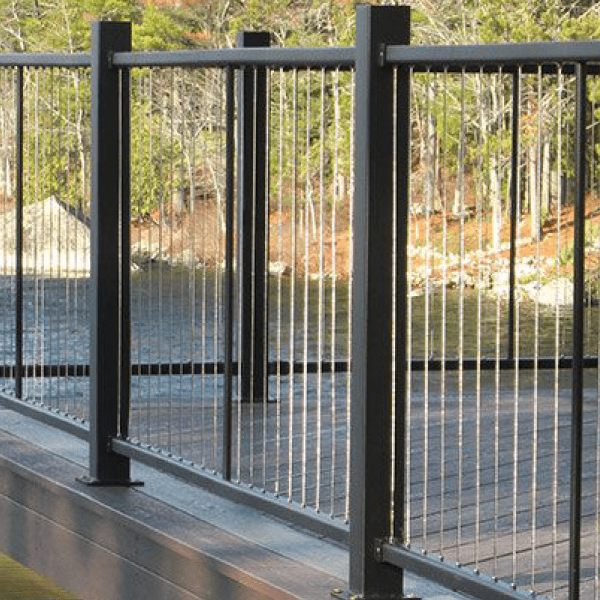Handrails are critical safety features and important tools for promoting multi-generational greenway usage.
While required, handrails can also be an important design feature with a wide variety of options and customizations possible. Below are some preferred alternatives.
- Per ADAAG, Handrails are required on sloped walkways and trails where the slope exceeds 5% longitudinally.
- Also by standard, they are required in areas where fall heights exceed 30”.
- However in practice and owing to the presence of cyclists, handrails should be used where there is a fall within 5’-0” of the trail that is in excess of 1’-6” unless some other vertical barrier is present, such as a curb or seat wall.
- Handrails should be a minimum of 42” high, see Standards. Handrails should always be set into concrete, whether core-drilled or placed into new concrete footings. No surface mounting.
- Fences or barriers placed within flood prone and/or stormwater overtopping and conveyance paths may catch floating debris and must be evaluated for adequacy by hydrologic and hydraulic analysis (also see recommended cable fencing for flood prone areas).
WELDED WIRE PANEL – PREFERRED HANDRAIL
 PREFERRED FOR DOCKS, BOARDWALKS, AND RAMPS
PREFERRED FOR DOCKS, BOARDWALKS, AND RAMPS
Welded wire panels give designers flexibility and much of the production can be handled off site. Because of the fixed nature of the panels, welded wire panels systems are best used in areas with consistent slopes or on boardwalks or docks where no slope is present.
- Minimum 42” tall.
- 2”x2” Wire Mesh grid welded to Surround Frame. Frames attach to rail posts.
- Openings between Surround Frame and rail posts to be less than 4”.
- Opening between bottom of Surround Frame and finish grade surface to be less than 4”.
- Powdercoated Aluminum or Steel, stainless steel. Black or silver typical.
BEST USE AREAS: Areas with no slope or consistent slopes, like ADA ramps.
PROS: Aesthetic value, panels are good for overlook conditions where ornamental rail pickets would block views. Little to no on site fabrication. Very robust and long lasting.
CONS: Overall cost. Requires detailed shop drawings, and may require as-built survey for final design, typically custom product.
 ORNAMENTAL HANDRAIL
ORNAMENTAL HANDRAIL
PREFERRED FOR ALONGSIDE TRAIL
Ornamental handrails have high aesthetic values, and most systems allow for easy installation along variable slopes, making these rails preferable for following alongside the trail.
- Minimum 42” tall.
- Openings between balusters to be less than 4”.
- One top rail and one bottom rail standard, can add more for aesthetics.
- Opening between bottom of baluster/rail and finish grade to be less than 4”.
- Powdercoated Aluminum or Steel, black typical.
- Should be heavy gauge, commercial grade railing.
BEST USE AREAS: Parallel to the trail, where variable slopes are present.
PROS: Standard product. Readily Available. Little to no custom fabrication required. Low cost.
CONS: Mechanical fasteners between rails and posts may require tightening. Not as rigid as a welded panel system. Pickets block views at overlooks.
 CABLE RAIL SYSTEM
CABLE RAIL SYSTEM
PREFERRED FOR AREAS OF FREQUENT FLOODING, OVERLOOKS
Cable rail systems are becoming more and more standardized, as several manufacturers have developed systems that have the flexibility to adjust to variable slopes, like an ornamental system. The thin cables make them ideal for areas where other systems might block views. Lateral load requirements should be determined through shop drawing process.
- Minimum 42” tall.
- Cables woven through or attached to bottom and top rail. Avoid horizontal cables.
- Openings between cables to be less than 4”.
- Distance between bottom rail and finish grade to be less than 4”.
- Typically powdercoated steel posts and rails, stainless steel cable.
BEST USE: Flood prone areas, overlooks, boardwalks and docks.
PROS: Provides most open views, good for overlooks. Cables work well in flood prone areas where debris carried by floodwaters would be more readily trapped by other systems.
CONS: Requires tensioning of cables regularly. Prefabricated systems are available, but most systems tend to be custom, adding to increased cost.